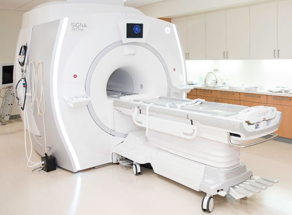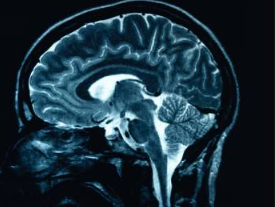In the Biological Approach to Behavior (BAB), the main concepts are about understanding how human biology affects a person's behavior. There are three main topics within this approach to understanding human behavior, including:
- The Brain and Behavior
- Hormones and Behavior
- Genetics and Behavior
Each of the above topics is further broken down into specific subtopics, which will be discussed in the sections later in the page. However, before we get into content, it is important to understand that the biological approach does not dictate psychology just because it is scientific fact. It is important to understand that the best way to analyze a psychological situation is through a biopsychosocial approach, which will analyze all components of a person's biology, cognition, and society/culture.
Additionally, on top of content, it is important to understand that the exam will want you to do more than just regurgitate content, but also evaluate the research and/or theory. It is also important to remember that ethical considerations and research methods are possible at all levels, and, more specifically, each topic. Therefore, each topic on this approach will contain information needed to perform well on the test, as well as an evaluation of different research methods and information about ethical considerations that accompany psychological research at this approach.
Now, into the content...
The Brain and Behavior
Before we jump right in, it is important to understand that the brain is an extremely complex part of each person. There are many different parts of the brain that are important to know. A bonus to knowing the anatomy of the brain is that you can be super specific with the information you include in your essays on the exam. An examiner might be very impressed if you detail a specific part of the brain that relates to the question or the research that you use.
The brain has four lobes, each of which have different functions:
- Frontal Lobe: important for cognitive functions and control of movement
- Occipital Lobe: primarily responsible for vision
- Parietal Lobe: processes sensory information
- Temporal Lobe: processes memories and associates them with senses
CRITICAL THINKING MARKS: Reductionism vs. Holism
In psychology, there are classical debates. One of these is reductionism versus holism. Reductionism refers to breaking down the whole into its parts, and holism refers to looking at the aspects that make up a whole. Studying the brain in psychology can fall under either side of the debate, depending on what is being researched. Either way, you can argue that the reductionist or holistic approach is a strength or limitation of the research.
The four lobes of the brain communicate with one another through the process of neural transmission. Before I get into the process, though, there are several other parts of the brain that are worth knowing:
- Brain Stem
- Medulla
- Pons
- Reticular Formation
- Thalamus
- Cerebellum
- Cerebral Cortex
- Limbic System
- Hippocampus
- Hypothalamus
- Cerebral Cortex
- Corpus Callosum
I am not going to go into detail about these parts of the brain, because it is not necessary to know all of them. There is simply too much content in this subject to know every single detail, so I highly recommend simply knowing the parts of the brain that are specific to research that you are learning for the exam. There are many different psychological studies that can be used for each of these parts of the brain. Don't sweat not knowing all of them; just know a few.
The brain as a whole is a part of the nervous system, along with the spinal cord and nerves. There are several breakdowns of the nervous system that you may consider using in essays, including:
- Central Nervous System: consists of the brain and spinal cord
- Peripheral Nervous System: consists of nerves
- Somatic Nervous System: external senses
- Autonomic Nervous System: internal senses
- Sympathetic Nervous System: emergency responses ("fight or flight")
- Parasympathetic Nervous System: relaxing responses ("rest and digest")
Alright, now that you know some basics about the brain and how it connects into human body systems, we're going to get into content, according to the subtopics provided by the subject guide.
Techniques used to study the Brain
LEARNING OUTCOMES:
SAQ Level:
-
There are several techniques used to study the brain, each of which have their strengths and limitations. The ones that are provided in the subject guide are:
- Magnetic Resonance Imaging (MRI)
- Functional Magnetic Resonance Imaging (fMRI)
- Electroencephalogram (EEG)
- Computerized Axial Tomography (CAT)
- Positron Emission Tomography (PET)
With these five modern technologies used to study the brain, I will provide general information about the technology, when they are used, images, strengths, limitations, and studies that utilized these technologies to conduct their research.
Magnetic Resonance Imaging (MRI)
An MRI is a machine that uses strong magnetic fields to observe the radio frequency signal generated. The way the scan is performed is pretty simple. The participant/patient lays down, and the machine slides them in. This makes more sense with an image, so, here is a picture of an MRI:

Since the MRI scan shows the anatomic structure of the brain, this would be appropriate to use when an image of the brain is needed. For example, a person with possible brain damage will need an MRI before going into surgery. This way, doctors and surgeons can assess the damage their brain has undergone. As an example, here is a scan that is produced as a result of the MRI.

The fact that the MRI produces images of the brain is a huge strength. This is especially beneficial in times where research is done connecting certain areas of the brain to certain human behaviors. Another advantage is that the MRI is a noninvasive procedure; this leads to a higher rate of participants in a study, because the procedure is much more comfortable than an invasive one.
Functional Magnetic Resonance Imaging (fMRI)
Electroencephalogram (EEG)
Computerized Axial Tomography (CAT)
Positron Emission Tomography (PET)
Brain Localization
Neuroplasticity
Neurotransmission/Neurotransmitters
Editors- BrendanFrizzell - 985 words.
View count: 13988